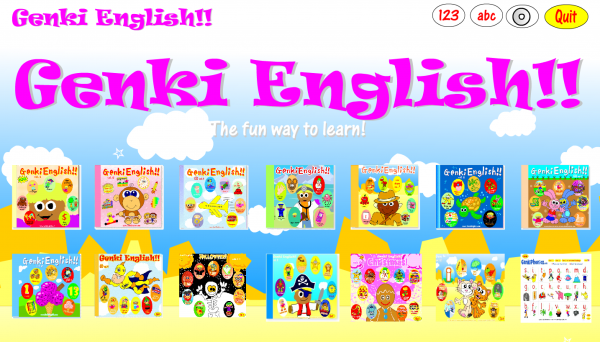After workshops next door to the Google and Microsoft offices in the city centre this week, today I was back into our slum area schools (although I don’t like calling them that because on a day like today they are as beautiful as anywhere else and of course they are the main reason I am in China!) to have a chat with the teachers about the next set of lessons plans for their curriculum. As usual they were very motivated and great!
Where to start?
For beginner teachers I usually give them a set of 20 basic lessons to work through, and they’re pretty much the same as the first 20 lessons on the curriculum page here. These have been proven to be popular with the kids, have lots of useful English and importantly are especially easy to teach.
And then?
But from then on flexibility is the key. Ideally you want to cover all the GE themes, but not all kids will want to do things in the same order or at the same time. And of course this applies to teachers as well. Plus because different schools start at different times of the year, you don’t want to be doing Winter Clothes in June or Ice Cream Flavours in December. Unless you’re in the south of course!
You choose & it’s your baby!
So instead of dictating the order to do things I usually ask the teachers to choose which themes they’d like to do, which gives them a lot more investment in the curriculum and makes it their own. I do this by covering a huge table with the printed lesson plans so they can see everything at once. They also start acting like kids in a sweet shop choosing which ones to do! Then I go through with them and tweak things to make it easier to flow from one section to the other, and that the activities build on the language as you go along.
You could of course go even further with this idea and get the kids to make their own curriculum at the start of term!
Plurals before singular
One thing the teachers did last time was to teach the Animal Voices theme before doing the Do you like animals? theme. Their rationing was that traditionally singulars should be taught before plurals. But of course in Genki English we do things the other way around, because if you teach “Do you like” with plural animals from the start it’s very easy to switch to “Do you like” + food. Then instead of worrying whether to put an “s” on the end of things or not, if you start with plurals the rule to make a singular is simple “If there’s an s, chop it off. If not leave it as it is.” This saves a lot of confusion for the kids! This also explains why they thought there were too many words in one lesson, because if you do the Animal Voices song first you actually have 20 pieces of vocab in one lesson! Doing Do you like animals? splits the vocab up.
Think of other subjects as well
The teachers today were also wanting to do the What time is it? theme. This is in first grade. In private settings I have no problem with this. But in primary school it’s always best to try and co-ordinate English with the other subjects. In most countries telling the time is only taught in 2nd grade. So it seems illogical to include time in English class before that. But today they said their kids could already tell the time and it would impress the parents if they could tell the time in English before other classes could do it in Chinese! So fair enough.
Balancing easy and challenging
One very good thing was that the teachers were wanting to include the very, very important Is it…? theme. This is one of the key skills in being able to describe something using other English you know, e.g. it’s a big animal, it’s yellow and black, it comes from Africa, it’s not a lion etc. Many teachers miss this out as they say it’s too difficult for their kids and in first grade in sometimes can be, but it was great to see the teachers wanting to teach this today!
I always try and do it as soon as I can. One really good way the teachers in Japan did it last year was to do the game first in Japanese. This gets over the difficult part of developing the describing skill without any extra difficult of using English. Once the kids get good enough to do the game in their own language they really, really enjoy it! So then you can say, OK how about an extra challenge, let’s try doing in English! The kids are usually really up for it then!
It’s also important to think of where in the term you put tougher themes, I usually put them near, but not at, the beginning or in the middle so that you enter the school holidays on a high note with an easier or more motivating theme. Today we went with Can you speak…? to go into the Summer holidays!
It’s fun!
Making a curriculum is fun, it’s like picking out skills you’d like to have. Oh, I’d like to be able to say that, and that, and that! Plus playing through the songs and games for each theme as you make the curriculum really makes you want to teach them right now because they are so fun. All the themes were chosen from language the kids like to say, but that’s usually also fun language for teachers to learn as well. You really look forward to them. And as you teach each year you learn more, see different problems and find new techniques to get over them, which is also pretty fun as well, as you never know what exciting new things you’ll find this year! I know I’m loving CD9 at the moment and I really wish I had made it 10 years earlier!
Curriculum Yoga
But make sure you keep the flexibility. Even the most perfectly planned curriculum will fail at some point because the kids’ interests will be different on different days. They’ll be tired or genki, into sports or the news, or the latest movie or freak weather. These are things a strict curriculum can’t cope with and it’s one reason why textbooks fail children, they just can’t respond to situations like a good teacher with a flexible set of materials can. So always have a back up lesson in mind, and always have back up activities in mind. Don’t worry if the kids suddenly whiz through 3 themes perfectly in an hour (they’ve probably been playing the computer games!) or that one theme won’t stick no matter how many times you cover it. Genki English is designed to be like this, like lego blocks thrown out there to play with and build things, eventually you will cover everything, but the route you take through the jungle is up to you and your kids!



I could finish writing this year’s curricula thanks to this blog.
No day can pass without saying Thank you to you.
Hi Richard,
Thank you for this post. It is something that many teachers are struggling with now, so it is very timely!
Just one question on how to deal with review. In your experiences, is it enough to teach a song an hour with maybe 2 or 3 5-minute reviews in later classes? What kind of retention do you see? For example are they able to ask and answer questions? Are they able to recycle ALL the vocabulary?
I know that your songs are effective and help in all these areas, but I tend to take 2 songs and recycle and review them over a series of lessons. I would be interested in hearing how the different curriculums effect retention.
@Yumiko: Glad it helped!
@Gumby: Good questions!
Rather than only a 3-5 minute review I prefer to also do lots of little reviews throughout each class, here’s an article I wrote a while back http://genkienglish.net/reviewing.htm .
I usually aim for the ability to ask and answer all the questions and understand most answers from all the previous lessson. Most kids manage this fine.
At the moment I don’t expect the kids to remember all the vocab. I think it’s more important to know “What’s your favourite…?” rather than being able to remember “florist” or “mountain bike”. The kids often do remember a lot of them, but I don’t mind if they don’t. Am I being too soft on that?
I do often add in review only lessons with games such as ATW which usually end up more vocab based.
For high school kids I’m working on the “Phonics & Funk Vocab Builders” for where they will have to drill vocab like crazy!
The tricky bit is when you have so much previous material that reviewing it becomes tedious (“we already know that!” they say) so you stop reviewing it. But then it’s important to bring it back every few lessons.
I think I’ve probably been influenced a lot by the timing in the Pimsleur courses with when they review things, because this is one of their keys, review something straight afterwards then again just before you’re about to forget it.
Also when reviewing today’s vocab I’ll add in random questions instead of today’s question, to trick the kids and keep them on their toes.
I’m also happy to stop the lesson at any time to review something. Especially during a game this can be effective as the kids really have a need for the English.
Here’s a nice Wired article “Want to Remember Everything You’ll Ever Learn? Surrender to This Algorithm” : http://www.wired.com/medtech/health/magazine/16-05/ff_wozniak
Richard wrote:
games such as ATW
Er…..forgive my ignorance, but what is ATW? I daresay I’ll kick myself when you tell me, but I’m a bit slower even than usual today!
Here you go: http://genkienglish.net/atw.htm
🙂
Thank you! Another one to put on the list for when I finally get back into a classroom!
As you know, I’ve been tasked with writing up a Genki curriculum for the school I’m at and I really don’t know what to do besides either just listing in Genki order with some personal tweaks the lessons…or going full detailed lesson plans which will take FOREVER! My bosses have also not been the clearest on what they exactly want.
Hello Richard! Just wanted to drop a line to say thank you for this amazing site you have created. A few of my neighbours have asked me to teach them English, and while desperately surfing the net, I found your site! So glad and greatly appreciate your time and effort! Many thanks 🙂
I’m in Martin’s position as well. I recently completed my program to be an ESL teacher, but with adults! I am now part-time at an after-school program for children from China who attend regular classes in an English-speaking school. My boss wants something so the parents know what I’m up to. Fair enough. But I don’t want to write that one day, I gave gummy worms every time one of them spontaneously used a third-person “s” (I gave each one some chances). And I don’t want to write in academic English about “consistently able to blah, blah, blah.”